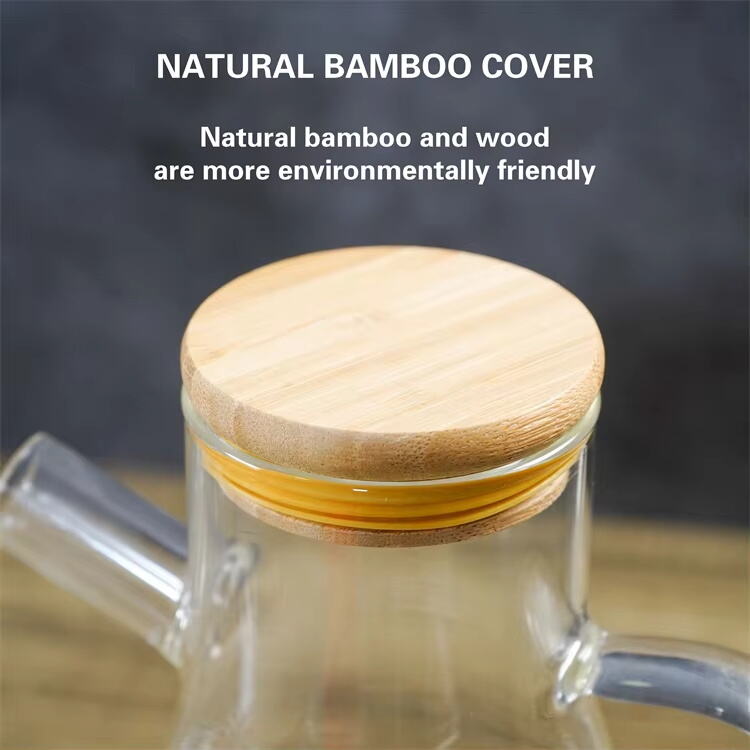Как стеклянный маслёнка сохраняет свежесть растительных масел?
Наука о хранении и сохранении масел
Сохранение качества и свежести растительных масел — это важный аспект управления кухней, который часто упускают как домашние повара, так и профессионалы. стеклянный масляный горшок выступает не просто привлекательной емкостью для хранения любимого оливкового, растительного или специализированного масла — это продвинутое решение, разработанное для защиты и поддержания качества ваших кулинарных основ.
Связь между хранением масла и его сохранением довольно сложна и включает такие факторы, как воздействие света, контроль температуры и контакт с воздухом. Понимание того, как стеклянный масляный горшок решает эти проблемы, может кардинально изменить способ хранения и ухода за кулинарными маслами, в конечном итоге улучшая ваш кулинарный опыт и сокращая отходы.
Основные характеристики качественного хранения масел
Преимущества стеклянной конструкции
Стеклянные масляные горшки обладают уникальными преимуществами, которые делают их превосходящими по сравнению с пластиковыми или металлическими контейнерами. Непористая структура стекла не впитывает запахи или вкусы, гарантируя, что ваше масло останется чистым и незагрязненным. Кроме того, качественное стекло инертно, предотвращая любые химические реакции, которые потенциально могут изменить состав масла.
Прозрачность стеклянного масляного горшка позволяет легко контролировать уровень и чистоту масла, помогая выявить возможное ухудшение качества до того, как оно повлияет на вашу готовку. Однако многие современные стеклянные масляные горшки оснащены специальным тонированным или обработанным стеклом, которое фильтрует вредные ультрафиолетовые лучи, сохраняя при этом видимость содержимого.
Элементы дизайна для оптимального хранения
Самые эффективные конструкции стеклянных маслёнок включают несколько ключевых особенностей, которые совместно способствуют сохранению свежести масла. Воздушно-герметичный механизм закупорки предотвращает окисление, а носик для наливания с крышкой обеспечивает контролируемую раздачу без излишнего контакта с воздухом. Некоторые модели оснащены инновационными системами, предотвращающими капание, что не позволяет остаткам масла скапливаться вокруг горлышка бутылки.
Стратегически продуманные размеры и пропорции также играют важную роль. Хорошо спроектированная стеклянная маслёнка должна иметь подходящий объём, который способствует регулярному использованию, при этом минимизируя объём воздушного пространства над маслом, поскольку это может ускорить его порчу.

Влияющие факторы окружающей среды и защитные механизмы
Технологии защиты от света
Современные стеклянные масляные горшки часто оснащаются передовыми свойствами защиты от ультрафиолета. Эта технология защищает масло от вредных световых лучей, которые могут вызывать химические реакции, приводящие к прогорканию. Некоторые производители используют янтарное или темное окрашенное стекло, в то время как другие разрабатывают специальные покрытия, обеспечивающие аналогичную защиту и сохраняющие привлекательный внешний вид.
Не менее важна стратегическая установка стеклянного масляного горшка на кухне. Даже при наличии встроенной защиты, хранение контейнера вдали от прямых солнечных лучей и искусственных источников света может дополнительно продлить свежесть масла.
Решения для управления температурой
Стекло обладает естественными изолирующими свойствами, которые способствуют поддержанию стабильной температуры масла. Качественный стеклянный масляный горшок минимизирует колебания температуры, которые могут влиять на качество масла. Толщина стекла и общий дизайн способствуют этому температурно-стабилизирующему эффекту.
Некоторые усовершенствованные стеклянные масленки имеют двойные стенки, которые создают дополнительный барьер против перепадов внешней температуры. Эта конструкция особенно полезна на оживленных кухнях, где температура окружающей среды может значительно варьироваться в течение дня.
Практическое использование и обслуживание
Правильные методы наполнения и хранения
Чтобы максимально эффективно использовать стеклянную масленку, важно соблюдать правильные методы наполнения. Оставляя минимальное пространство над маслом, можно уменьшить окисление, а регулярная очистка и плотное закрывание обеспечивают оптимальное сохранение масла. Процесс переливания масла следует выполнять аккуратно, чтобы не допустить попадания загрязняющих веществ.
Регулярное обслуживание включает проверку уплотнений и прокладок на износ, тщательную очистку носика для наливания и осмотр стекла на наличие повреждений, которые могут нарушить его защитные свойства. Хорошо обслуживаемая стеклянная масленка может эффективно служить в течение многих лет.
Рекомендации по очистке и уходу
Сохранение чистоты стеклянного масляного горшка имеет решающее значение для сохранения масла. Мытье вручную с использованием мягкого мыла и тщательное высыхание перед повторным наполнением помогает предотвратить загрязнение. Особое внимание следует уделить механизмам уплотнения и носику для наливания, где может скапливаться остатки масла.
Периодическая глубокая очистка может быть необходима, особенно при переходе между различными типами масел. Это предотвращает перенос вкуса и гарантирует, что каждая новая партия масла останется свежей на протяжении максимально возможного времени.
Часто задаваемые вопросы
Как долго может оставаться свежим растительное масло в стеклянном масляном горшке?
При правильном хранении в качественном стеклянном масляном горшке большинство видов растительного масла могут сохраняться свежими в течение 3–6 месяцев. Однако этот срок может варьироваться в зависимости от типа масла, условий хранения и эффективности уплотнительного механизма горшка.
Можно ли хранить разные типы масел в одном стеклянном масляном горшке?
Хотя можно использовать один и тот же стеклянный горшок для масла для разных масел, важно тщательно мыть его при смене, чтобы предотвратить перенос вкуса. Некоторые масла могут оставлять остатки, которые могут повлиять на вкус последующих масел, хранящихся в горшке.
Почему стеклянные горшки для масла лучше пластиковых контейнеров?
Стеклянные горшки для масла превосходят пластиковые контейнеры, потому что они не впитывают запахи и вкусы, не выделяют химические вещества в масло, обеспечивают лучшую защиту от света и перепадов температуры и, как правило, служат дольше. Они также обладают более привлекательным внешним видом и более экологичны.
Нужно ли хранить стеклянный горшок с маслом в холодильнике?
Большинство кулинарных масел не требуют хранения в холодильнике, если они хранятся в стеклянном горшке. На самом деле, хранение при комнатной температуре обычно является оптимальным, при условии, что горшок хранится вдали от источников тепла и прямых солнечных лучей. Некоторые деликатные масла могут выиграть от хранения в холодильнике, но ознакомьтесь с конкретными рекомендациями по хранению вашего типа масла.

 EN
EN
 AR
AR
 FR
FR
 PT
PT
 RU
RU
 ES
ES








